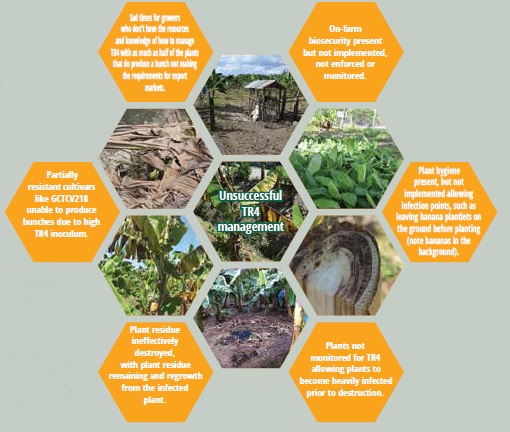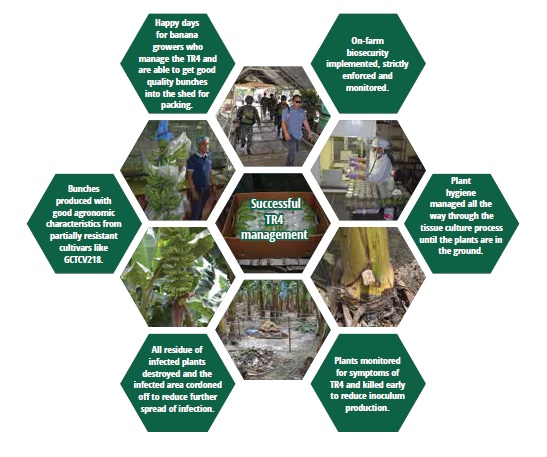By Tony Pattison
Filipino banana growers differ greatly in how effectively they manage Fusarium Wilt (Panama Disease) of banana.
In a nutshell, the farms that were most effective in managing the disease were typically those with more resources to allocate to the problem.
These stark contrasts in disease severity between farms became apparent during a recent visit to Mindanao as part of an Australian Centre for International Agricultural Research (ACIAR) project focussing on integrated management of Panama Disease.
The Philippine banana industry is the second largest banana exporting nation and includes large multinational and national farms that supply around 70% of export bananas from approximately 80,000 ha, with small-holder banana growers or cooperatives, supplying the remaining 30%.
The Philippines banana industry was first affected by Tropical Race 4 (TR4) in 2005, but since 2013, the disease has spread rapidly.
An estimated 15,000 ha of land is now believed to be infested with TR4 on Mindanao, the country’s main production area.
In response to TR4, Philippine growers are now starting to plant GCTCV218 (Formosana), which is a partially resistant cultivar from Taiwan. Critically, our visit revealed stark differences in the success of GCTCV218 on farms with and without effective biosecurity and inoculum management.
Things I learnt about TR4 while in the Philippines
Tony Pattison, Researcher, DAF
“Management of disease inoculum is essential to producing bananas in TR4 infected areas, but we still don’t know how to do this effectively”
Stewart Lindsay, Researcher, DAF
“Seeing the different performance for the same resistant Cavendish variety on different farms has reinforced for me that any working solution for growers wanting to keep growing Cavendish is more than just changing the variety”
Paul Dennis, Researcher, University of Queensland
“Gowers need more information about how to reduce pathogen load and avoid it building up in the first place”
Jim Pekin, CEO ABGC
“It is essential to keep TR4 fungal levels low in order to profitably grow any currently available and market acceptable banana variety”
Leon Collins, Banana Grower, Tully
“If you are 1000 km away from this disease you are too close”
Irene Kernot, Research Program Manager ACIAR
“Farmers can’t afford to follow advice not grounded in good science and that science must provide answers relevant to the whole banana farming system. In some ways the key thing the industry needs is hope that a solution is within reach”


